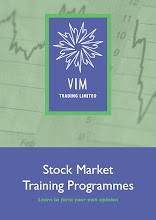There has been a lot of talk, maybe too much talk about banks and credit since the 2007 crash and burn of Ireland. However, there have been no answers to questions that were raised in the Dáil during the debate of the “Central Bank Bill” in 1942.
James Dillon raised some of these questions in the Dáil. He was expelled from Fine Gael in 1942, the year this bill was introduced.
To reduce the rubbish talked and written in the media, should it be mandatory for anyone commenting to understand that debate?
Dail Debate
Should they have an understanding of what happed in factual terms to the money supply in Ireland in the final stages of the property bubble?
Centralbank stats
The myth that the Irish borrowed German savings created the credit bubble is debunked by just looking at the expansion of the ECB money supply. Total ECB M3 expanded from €5.780 trillion in Jan. 2003 to €9.822 trillion in Feb. 2012.
ECB Stats
Growth of ECB Money Supply

Essentially the banks in the periphery counties expanded credit money causing the bubble. They may have looked for reserves in foreign countries but the overall effect is a global expansion in credit (money Supply). The figures are in official documents. Any commentator that implies that the debt was another’s savings and the bank is just an intermediary either hasn’t a clue or is purposely misleading the public.
From Dáil Debate, 17 July, 1942 Committee on Finance. - Central Bank Bill, 1942—Fifth Stage
I might quote one short paragraph, and apply it to these two Deputies, from this authority, on whom Deputy McGilligan places such reliance. It is from page 47 of Crowther's An Outline of Money:—
“Thus the bank does not ‘create’ money out of thin air; it transmutes other forms of wealth into money. Even the mediaeval alchemists never hoped to make gold out of nothing; their highest hope was to transform lead into gold. The banker's power is not even so great as this, for he cannot change a worthless substance into a valuable one. But he can [981] turn immobile wealth into the mobile (or ‘houid’) form of wealth known as money. He takes the immobile wealth as his asset and gives his I O U (which is money) in exchange. This is the very essence of the banker's business.” Minister for Finance, Mr. O Ceallaigh
Lets present a real example from the Irish Property Bubble.
A landowner has swamp land on the edge of a village not fit for grazing cattle. He presents plans to the local authority to build a hotel, pub, shops some houses and apartments. Four months later the plans are approved. Due to approval for this development from the local authority the swamp is sold for €1million. The new owners borrowed the money to buy this swamp, the bank “transmutes" the swamp into €1million by the bank creating a new account for the buyer and placing €1million credit money into it. It took a charge on the land and places it on its assets at a value of €1million. The buyer gives the seller the €1million and owes the bank that amount plus interest. The seller deposits the €1million in his account, which is a liability on the balance sheet of his bank. In short, the loan to the buyer created a deposit for the seller and the money supply expanded by €1million. In effect, the €1million is the value of the planning permission. If no development occurs and the planning lapses the bank now has a worthless swamp but the seller still has his €1million. The buyer still owes the bank the loan plus interest. This is what happened in many cases, the land values dropped but the deposits (liabilities) remained. In fact about €100Billion was created and given to about 100 developers who spent it on now unfeasible developments. The “alchemists” required no German savings. They just require an intangible banking licence.
From Dáil Debate, 17 July, 1942 Committee on Finance. - Central Bank Bill, 1942—Fifth Stage
Credit, it cannot be too often repeated, has many of the characteristics of dynamite. Prudently used it can discharge many valuable functions, recklessly employed it can destroy the whole fabric of the State.
Mr James Dillon
If you want an understanding of what happened in Ireland you can get a visual of the lead up to the crash in the Money Supply charts below. You will also need an understanding of the questiones posed by James Dillon in that Dáil Debate. Leaving the Euro and returning to the Punt under the same Central Bank model is not the answer. The banks had their chance and "destroy(ed) the whole fabric of the State". Its time for the people to take owership and control of their credit.
Irish Money Supply Million Euro
Irish M1 Money (Currency & Demand Deposits)









